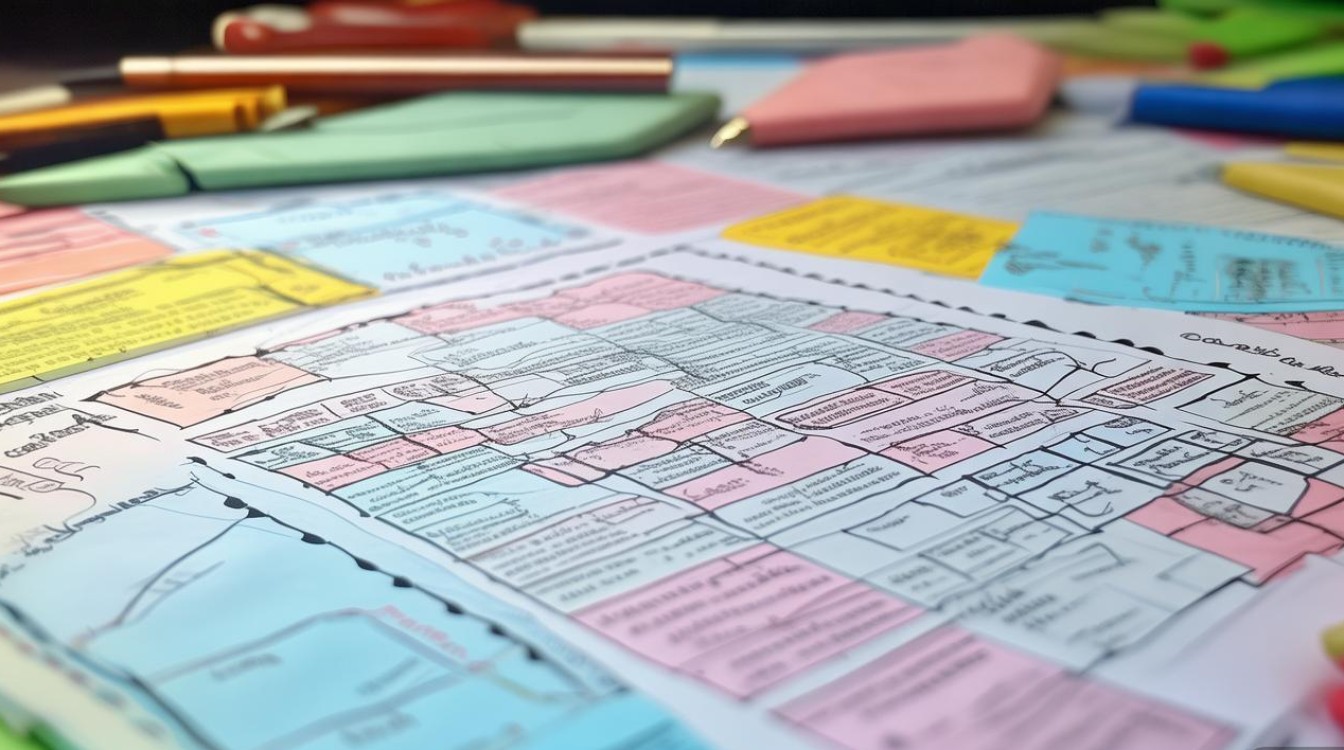这份导图按照教材的单元主题进行划分,涵盖了核心词汇、核心句型和主要语法点,非常适合用于复习、预习和构建知识体系。

人教版五年级下册英语 整体思维导图
中心主题: PEP English Grade 5 (Book 2)
- 核心模块: Unit 1 - Unit 6
- 贯穿始终: 语音、时态、话题功能
Unit 1: My Day (我的一天)
- 核心话题: 日常作息与时间安排
- 核心词汇:
- 时间与频率:
do morning exercises(做早操),eat breakfast(吃早饭),have ... class(上...课),play sports(进行体育运动),eat dinner(吃晚饭),eat dinner(吃晚饭),go shopping(购物),get up(起床),go to bed(睡觉),clean my room(打扫我的房间),go for a walk(散步) - 频度副词:
always(总是),usually(,often(经常),sometimes(有时),never(从不)
- 时间与频率:
- 核心句型:
- 询问时间:
— When do you ...? — I ... at ... .- 例:
— When do you get up? — I usually get up at 6:30.
- 例:
- 询问活动频率:
— What do you do on the weekend? — I often ... .- 例:
— What do you do on the weekend? — I often read books and watch TV.
- 例:
- 询问时间:
- 核心语法:
- 一般现在时: 用来描述经常性、习惯性的动作或状态。
- 主语为第三人称单数 (he/she/it) 时的动词变化:
- 动词
s化:get→gets,do→does,go→goes,watch→watches,clean→cleans,play→plays - 句型变化:
— When does he/she/it ...? — He/She/It ... at ... .- 例:
— When does he go to bed? — He goes to bed at 9:00.
- 例:
- 动词
Unit 2: My Favourite Season (我最喜欢的季节)
- 核心话题: 季节、天气与季节性活动
- 核心词汇:
- 季节:
spring(春天),summer(夏天),autumn(秋天),winter(冬天) - 天气:
warm(温暖的),hot(炎热的),cool(凉爽的),cold(寒冷的),windy(多风的),sunny(晴朗的),cloudy(多云的),rainy(下雨的),snowy(下雪的) - 活动:
plant trees(种树),go on a picnic(去野餐),go swimming(去游泳),pick apples(摘苹果),make a snowman(堆雪人),skate(滑冰)
- 季节:
- 核心句型:
- 询问最喜欢的季节:
— Which season do you like best? — ... .- 例:
— Which season do you like best? — Winter.
- 例:
- 陈述原因:
— Why? — Because ... .- 例:
— Why? — Because I like summer vacation.
- 例:
- 描述天气:
It's ... in ... .- 例:
It's hot and sunny in summer.
- 例:
- 询问最喜欢的季节:
- 核心语法:
- 特殊疑问词
which的用法: 询问特定范围中的一个。 like+v-ing的用法: 表示喜欢做某事。- 例:
I like swimming.
- 例:
because引导原因状语: 回答Why提问。
- 特殊疑问词
Unit 3: My School Calendar (我的校历)
- 核心话题: 节日、月份与学校活动
- 核心词汇:
- 月份:
January(一月),February(二月),March(三月),April(四月),May(五月),June(六月),July(七月),August(八月),September(九月),October(十月),November(十一月),December(十二月) - 节日与活动:
New Year's Day(元旦),Tree Planting Day(植树节),Easter party(复活节派对),sports meet(运动会),art festival(艺术节),Mother's Day(母亲节),Father's Day(父亲节),summer vacation(暑假),winter vacation(寒假),National Day(国庆节),Christmas(圣诞节),trip(旅行)
- 月份:
- 核心句型:
- 询问节日/活动时间:
— When is ...? — It's in ... .- 例:
— When is Tree Planting Day? — It's in March.
- 例:
- 表达意愿:
I want to ... .- 例:
I want to make a card for my mother.
- 例:
- 询问节日/活动时间:
- 核心语法:
- 介词
in,on,at用于时间:in + 月份/年份/季节:in May,in 2025,in springon + 具体某一天/节日:on Monday,on January 1st,on Christmas Dayat + 具体点钟:at 8 o'clock
- 序数词: 用于表达日期 (e.g.,
first,second,third,fifth,eighth,ninth,twelfth,twentieth,twenty-first...)
- 介词
Unit 4: When is the Art Show? (艺术展是什么时候?)
- 核心话题: 询问具体活动日期
- 核心词汇:
- 活动:
English test(英语测试),party(派对),trip(旅行),sports meet(运动会),school trip(学校旅行),art show(艺术展) - 日期表达:
When is ...?(什么时候是...?),It's on ... .(它在...。)
- 活动:
- 核心句型:
- 核心句型同 Unit 3:
— When is ...? — It's on ... .- 例:
— When is the party? — It's on May 1st.
- 例:
- 核心句型同 Unit 3:
- 核心语法:
- 重点复习: 介词
on用于具体日期。 - 名词所有格: 表示“...的”。
- 有生命名词:
Tom's book(汤姆的书),Children's Day(儿童节) - 无生命名词 (通常用
of):the door of the classroom(教室的门)
- 有生命名词:
- 重点复习: 介词
Unit 5: Whose dog is it? (它是谁的狗?)
- 核心话题: 询问物品归属
- 核心词汇:
- 动物:
cat,dog,pig,duck,bear,panda,fox,zebra,elephant,lion,tiger,monkey,rabbit,mouse,squirrel - 名词:
hat,shirt,dress,skirt,T-shirt,shorts,pants,shoes,socks - 核心短语:
climbing trees(爬树),eating lunch(吃午饭),playing football(踢足球),jumping(跳),sleeping(睡觉),drinking water(喝水)
- 动物:
- 核心句型:
- 询问归属 (单数):
— Whose ... is this? — It's ...'s.- 例:
— Whose cat is this? — It's Zhang Peng's.
- 例:
- 询问归属 (复数):
— Whose ... are these? — They're ...'s.- 例:
— Whose shoes are these? — They're John's.
- 例:
- 描述正在发生的事情:
— What is he/she/it doing? — He/She/It is ... .- 例:
— What is the dog doing? — It's running.
- 例:
- 询问归属 (单数):
- 核心语法:
- 现在进行时: 表示说话时正在进行的动作。
- 结构:
am / is / are + 动词-ing - 现在分词的构成规则:
- 一般直接加
ing:do→doing,play→playing - 不发音的
e去掉加ing:make→making,write→writing - 重读闭音节词,双写末尾辅音字母再加
ing:run→running,swim→swimming
- 一般直接加
- 结构:
- 现在进行时: 表示说话时正在进行的动作。
Unit 6: Work Quietly! (请安静地工作!)
- 核心话题: 描述正在进行的动作及提出请求
- 核心词汇:
- 动作:
doing morning exercises(做早操),having ... class(上...课),eating lunch(吃午饭),reading a book(看书),listening to music(听音乐),keeping clean(保持干净),keeping the desk clean(保持书桌干净) - 地点:
library(图书馆),classroom(教室),school(学校) - 标志语:
Work quietly.(请安静工作。),Talk quietly.(请小声说话。),Keep your desk clean.(保持你的书桌干净。),Keep to the right.(靠右行走。)
- 动作:
- 核心句型:
- 描述正在进行的动作 (复数):
— What are they doing? — They are ... .- 例:
— What are the students doing? — They are reading books.
- 例:
- 提出请求或命令:
— Please ... . / ... + 副词.- 例:
— Please work quietly. / Talk quietly.
- 例:
- 描述正在进行的动作 (复数):
- 核心语法:
- 现在进行时的复数形式:
are + 动词-ing - 情态动词
can的用法:can+ 动词原形,表示能力或许可。- 例:
We can play football.
- 例:
- 祈使句: 用于表达命令、请求、建议等。
- 肯定形式:
Be quiet./Open the door./Let's go. - 否定形式:
Don't be noisy./Don't talk.
- 肯定形式:
- 现在进行时的复数形式:
五年级下册 贯穿始终的知识点
- 语音:
- 元音字母组合的发音: 如
ea,ee,oo,ow,ou,er,ar,al等。 - 辅音连缀的发音: 如
br,gr,fr,pl,cl,sk,sp等。
- 元音字母组合的发音: 如
- 话题功能:
- 时间: 询问和表达时间、日期、季节。
- 日常活动: 描述日常作息和习惯。
- 爱好与喜好: 表达对季节、活动的喜好及原因。
- 物品与归属: 询问物品的主人。
- 正在发生的事: 描述和观察身边的人或物正在做什么。
- 规则与礼貌: 学习并使用公共场所的规则和礼貌用语。
希望这份详细的思维导图能帮助你更好地理解和掌握五年级下册的英语知识!











